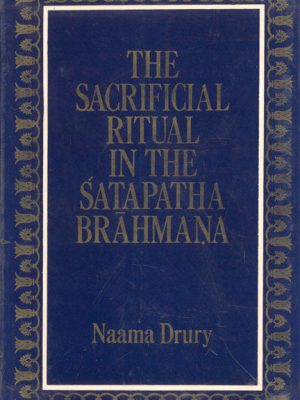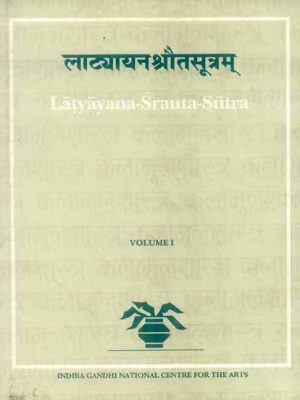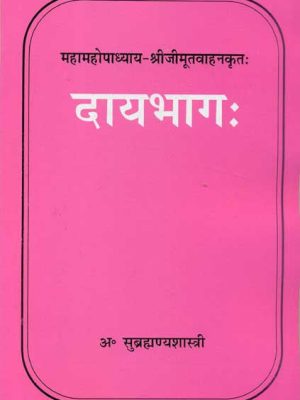
Motilal Banarsidass Publishing House
-
Classical Hindu Mythology: A Reader in the Sanskrit Puranas
Classical Hindu Mythology: A Reader in the Sanskrit Puranas
The Mahapuranas are the texts that best represent the conventional wisdom of Hindu mythology. This anthology includes recent translations of these stories, of which only a handful have ever been made accessible in English previously, and as a result, it makes available a substantial new section of Hindu mythology.
There are six different chapters in all in this book. Myths are told in “Origins” that are associated with creation, time, and space. The book “Seers, Kings, and Supernaturals” tells stories of rivers, trees, animals, demons, and mankind, most notably heroes and wise men. Krsna, Visnu, and Siva each have their own chapter to devote to debunking the many myths that circulate about them. The tales of the wives and lovers of the gods are told in the chapter titled “The Goddess.” The chapter also discusses Kali, the fierce goddess of conflict.
In the introductions that they have written, the editors have provided not only a historical context in which to analyse Hindu mythology but also a comprehensive examination of the sources upon which it is based. The several names that were originally given. The editors have included a comprehensive lexicon in order to make these names more understandable.
Author
Cornelia Dimmitt
₹995.00 -
Isvarasamhita (Set of 5 Vols.)
Isvarasamhita (Set of 5 Vols.)
Both Vaikhanasa and Pancaratra are very significant schools of ritual and philosophy that emerged as a direct result of Visnuism’s influence. The Isvarasamhita is an essential piece of literature for followers of the Pancaratra school of Visnuism.
Pancaratra is characterised by a more open and permissive approach, in contrast to Vaikhanasa, which has a character that is relatively archaic and relies more heavily on the Vedic tradition for its repertoire of mantras that are used in religious rites and ceremonies. Pancaratra’s repertoire of mantras can be found here. It has a text tradition that dates back around two thousand years, which has also been the primary basis for the Visistadvaita philosophy that was developed by Ramanuja (between the 11th and 12th centuries). Worship is performed in line with the instructions provided in one of the significant Pancaratra Samhitas at the vast majority of Vaisnava temples located in southern India, particularly in the state of Tamilnadu.
At the Narayanasvami temple in Melkote, a strict adherence to the Isvarasamhita can be seen throughout the daily puja ritual as well as during the many other types of religious celebrations that take place there. This is because the Isvarasamhita is an essential scripture of the Pancaratra School. Given that it is mentioned in Shri Yamunacarya’s Agama Pramanya, we may confidently place it somewhere between the 8th and 9th centuries at the very least. It is said to be a simpler and shorter version of the older sattvatasamhita of this school, which is the earliest available work of Pancaratra and is regarded as one of three ratnas, (Jewels), along with the Pauskara- and Jaya Samhitas. In other words, it is the simplest and shortest version of the older sattvatasamhita of this school. The Isvarasamhita contains a description of the rites, rituals, and ceremonies that take place (or ought to take place) at a Vaisnava temple. This description is spread out across 25 lengthy Adhyayas.
Palm leaf Because of its reputation for genuineness, the Narayanasvami temple in Melkote was the primary source for the Isvarasamhita manuscripts that were acquired. We have included attached to the text the gloss that was written by Alasimha Bhatta in the early 19th century. This gloss will be of assistance in understanding some terms that are difficult to understand or are sectarian in nature. The current researchers who are working on the philosophy, ritual, and iconography of Visnuism will find the English translation helpful, thus it has been supplied on the page facing them (to the right).
It should come as no surprise that the study of art cannot proceed without first acquiring a sufficient familiarity with ritual.
Author
V. Varadachari
₹6,000.00Isvarasamhita (Set of 5 Vols.)
₹6,000.00 -
The Sacrificial Ritual in the Satapatha Brahmana
The Sacrificial Ritual in the Satapatha Brahmana
The Sacrificial Ritual in the Satapatha Brahmana
Author
Naama Drury
₹350.00 -
The Hymns of Sankara
The Hymns of Sankara
In conjunction with Sri Sankara Jayanti festivities at Sankara Vihara, Ayanavaram, Madras, every year it has been a regular habit to put out some modest publication based on the works of the Great Master as also works about him under the term ‘Jayanti Series’. The current work falls within such category.
Besides composing his well-known commentaries and Advaita manuals, Adi Sankara penned a great number of powerful hymns filled with intense devotion. Were this reality well known, the complaint brought against Sankara’s Advaita, viz., that there is no space for bhakti in the path of jnana would not have been made.
This book contains several of his hymns. At the conclusion Totakacarya’s well-known song to Sankara is added.
The material is offered in Devanagari script with transliteration, English translation and commentary.
Author
Dr. T.M.P. Mahadevan
₹495.00The Hymns of Sankara
₹495.00 -
Vediki Prakriya: Shodhpurna Alochanatamak Vistrit Hindi Vyakhya
Vediki Prakriya: Shodhpurna Alochanatamak Vistrit Hindi Vyakhya
Vediki Prakriya: Shodhpurna Alochanatamak Vistrit Hindi Vyakhya
About the Author(s)
Damodar Mehto
₹395.00 -
Dharmasutra Parallels: Containing the Dharmasutras of Apastamba, Gautama, Baudhayana and Vasistha
Dharmasutra Parallels: Containing the Dharmasutras of Apastamba, Gautama, Baudhayana and Vasistha
The Dharmasutra Parallels provide a synoptic presentation of the passages that may be found in the four Dharmasutras of Apastamba. The teachings of Gautama, Baudhayana, and Vasistha all focus on the same concepts. The Dharmasutras are the earliest complete legal code from ancient India that has survived to the current day. An in-depth examination of these early legal treatises is required if we are to have any hope of comprehending not only the legal history of the three or four centuries prior to the common era, but also the cultural and religious history of that time period. This was the time when many of the characteristics that are typically associated with Indian civilization began to take shape during that era.
Author
Patrick Olivelle
₹1,495.00 -
The Pravargya Brahmana of the Taittiriya Aranyaka: An Ancient Commentary on the Pravargya Ritual
The Pravargya Brahmana of the Taittiriya Aranyaka: An Ancient Commentary on the Pravargya Ritual
A historical commentary on the Pravargya ceremony can be found in Prapathaka 5, which is part of the Taittiriya Aranyaka in the Andhra recension. This commentary, known as the Pravargya Brahmana, is presented here in a translation that also includes annotations. An investigation of the Pravargya ritual is included in the Introduction. This ceremony is referred to as “One of the few rites that have been specifically alluded to in the Rgveda (typically under the term “Gharma”).” The abstract and spiritual character of what is most likely the primary purpose of the ritual – the participants should acquire the lustre of the sun – the straightforward means by which it can be performed, and the manner in which the main implement, the pot which is heated to a red-hot temperature, is worshipped, give it a special place among the vast assortment of Vedic rites. In addition to the translation, the original Sanskrit text of the Pravargya Brahmana of the Taittiriyas has also been provided here. The present work was prepared under the direction of Professor Dr. H.W. Bodewitz (Utrecht), and it is an expansion of an essay that the author wrote as part of the author’s partial fulfilment of the requirement for the degree of “doctorandus” at the University of Utrecht, 1987. This work was prepared under the guidance of Professor Dr. H.W. Bodewitz (Utrecht).
Author
Jan E.M. Houben
₹595.00 -
Vedic Hermeneutics
Vedic Hermeneutics
This book asserts that the Veda is what makes known knowledge inaccessible to empirical means of knowledge and what does not contradict what is known through history, science, reason, and common sense. Additionally, it states that the Veda is what does not contradict what is known through common sense. Only information that is relevant to Dharma and Brahman is included in its content. It is possible to correctly comprehend it by using the concepts that have been outlined by the Nirukta and the two Mimamsas.
What the most influential tradition recognises as the Veda is, in point of fact, the Veda. A wise person once remarked, “The meaning of its earlier section is lighted by the smrtis, and the meaning of its latter portion is lit by the itihasa-puranas.” Understanding its significance requires, among other things, familiarity with the bhasyas written by Madhva, Sayana, and Atmananda. This study makes an effort to demonstrate that this is the case. Both the assertion of the oneness of Being and the awareness of that unity may be found in the Rgveda. The Yajurveda imparts knowledge to us about the deed that is superior. Chanting and meditation on what the first Veda praises or depicts is at the heart of the Samaveda. The Atharvaveda proposes that being and man are quite similar to one another, if not identical.
₹450.00Vedic Hermeneutics
₹450.00 -
Madhyanindenkramapath (Pratham Bhag)
Madhyanindenkramapath (Pratham Bhag)
A Brief Synopsis of the Book Madhyanindenkramapath (Pratham Bhag) “Blossoms of Friendship depicts each one of Vimala Thakar’s speeches as a delectable morsel, so preserving the ageless quality of Thakar’s words. The fifth chapter, “The Silence of Meditation,” is my favourite because it so eloquently emphasises the need of spiritual practise in modern society, even going so far as to call it a necessity.”
About the Author(s)
Yudhishthir Mimansak
₹1,245.00Madhyanindenkramapath (Pratham Bhag)
₹1,245.00 -
In the Image of Fire: The Vedic Experience of Heat
In the Image of Fire: The Vedic Experience of Heat
₹695.00 -
Latyayana Srauta Sutra (3 Vols.)
Latyayana Srauta Sutra (3 Vols.)
The Srauta Sutras are an essential part of the larger body of literature known as the Sutras. They are known for distilling the substance of the Vedic scriptures known as the Samhitas and the Brahmanas into a condensed form, which helps to reinforce India’s long-standing custom of offering sacrifices. The Yajurveda and the Samaveda, as well as the Rgveda, which is known to have developed a variety of recensions with differences in utterance and practise, are also important to the sacrificial tradition in India, which is widely known to be based primarily on the Rgveda, which is the oldest book that was written by humans.
₹2,200.00Latyayana Srauta Sutra (3 Vols.)
₹2,200.00 -
Poems to Siva: The Hymns of the Tamil Saints
Poems to Siva: The Hymns of the Tamil Saints
The Tevaram hymns are the fundamental text of Tamil Saivism, which was one of the earliest prominent large-scale devotional groups within Hinduism. These lyrics were written by three poet saints during the sixth and eighth centuries A.D. Tevaram hymns were composed within this time period. These hymns provide vivid and moving portraits of the images, myths, rites, and adoration of Siva, and they continue to be loved and sung by the millions of followers of the Tamil Saiva tradition. Indira Peterson eloquently renders into English a substantial portion of these hymns, and she does so in a way that makes them accessible to English readers. This anthology is a valuable resource for the study of South Indian popular religion as a result of her introduction and annotations, which provide light on the literary, theological, and cultural settings in which the work was produced. Indira Peterson identifies the Tevaram as a pivotal work in the history of Tamil culture. The Tevaram is both a synthesis of pan-Indian civilisation and Tamil civilization, as well as a uniquely Tamil expression of the love of song, holy landscape, and ceremonial religion. Her examination of this work leans heavily on her ground-breaking research into the performance of the hymns and its relationship to the art and ritual of the South Indian temple.
Review(s)
“Peterson’s graceful and clear style makes for a smooth reading of this arcane study, which is supplied with voluminous footnotes, a glossary and an indexÄ . Peterson has broken new ground in introducing to her readers the first large-scale devotional son
Author
Indira Viswanathan Peterson
₹1,000.00 -
Daay Bhag: Mahamahopadhyay-Shriji Mootwahankrit:
Daay Bhag: Mahamahopadhyay-Shriji Mootwahankrit:
Daay Bhag: Mahamahopadhyay-Shriji Mootwahankrit
About the Author(s)
A. Subrahmanya Shastri
₹75.00 -
Mantra
Mantra
The encounter with the holy in India is a synthesis of three distinct aspects: performance, music, and visual presentation. One of three works that make up a trilogy that also includes Diana Eck’s Darsan: An introduction to the use of sound, or mantra, in the practise of Indian religion, Seeing the Divine in India gives an overview of this aspect of Indian spirituality. The use of mantra, which may take the form of prayers, rituals, and chants, is ingrained in the everyday practise of Indian religion, whether it is carried out at a temple or at home. This book explores the ability of mantra to bring about a shift in one’s state of awareness. It incorporates allusions to Buddhist, Hindu, Sikh, and Muslim as well as Sufi and Sufi traditions as it investigates the use and theory of mantra throughout a number of different religious systems, such as the Patanjali sutras and tantra. This updated version includes additional chapters on the use of holy sound among groups of Hindus and Sikhs who have migrated to North America, as well as on the practise of yoga and mantra in North America by people who are not of Indian descent.
₹245.00Mantra
₹245.00 -
Shradhpaddhti: Katyayansutranusarini
Shradhpaddhti: Katyayansutranusarini
Shradhpaddhti: Katyayansutranusarini
Author
Janardan Shastri Pandey
₹495.00














